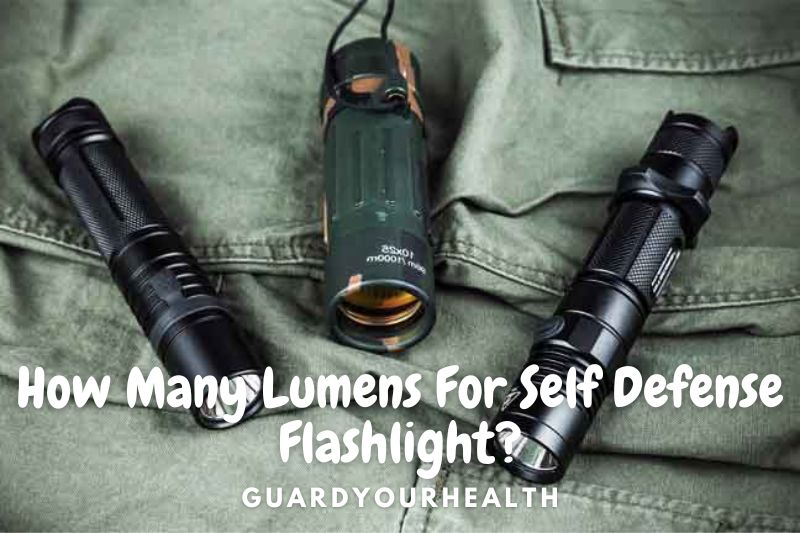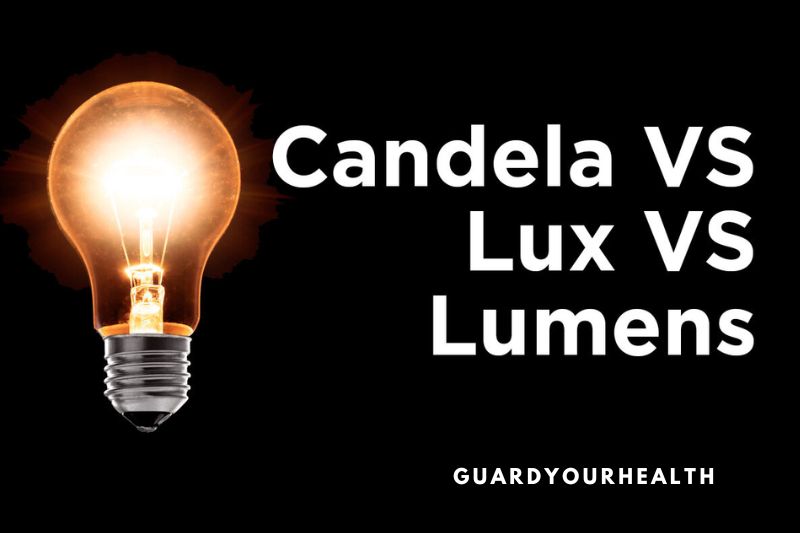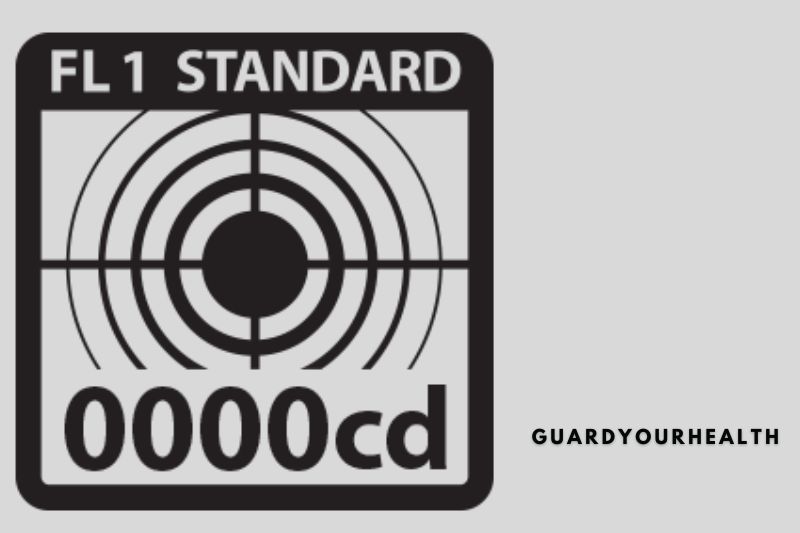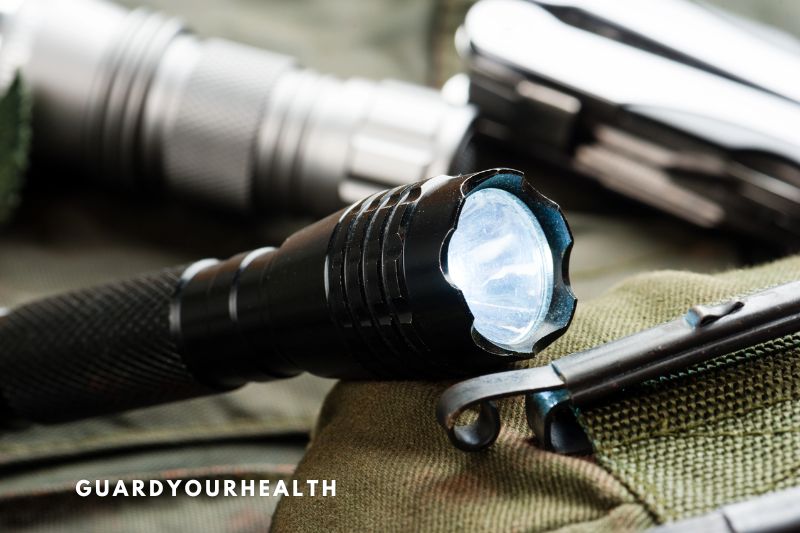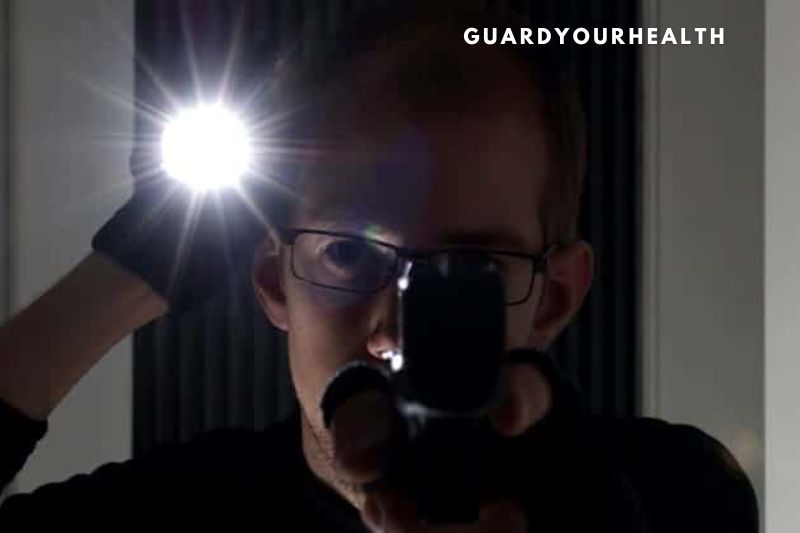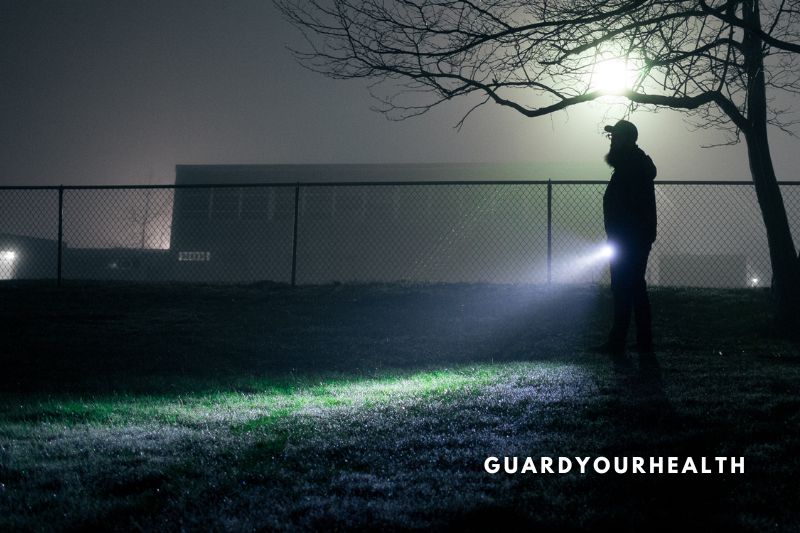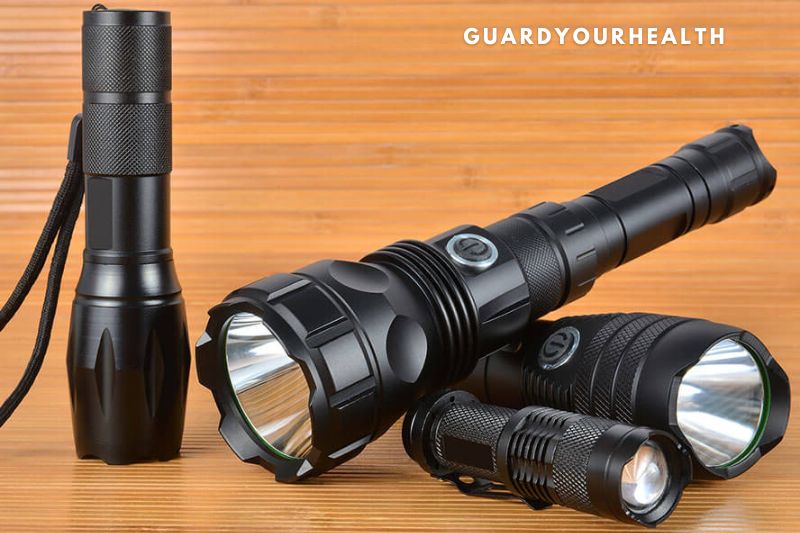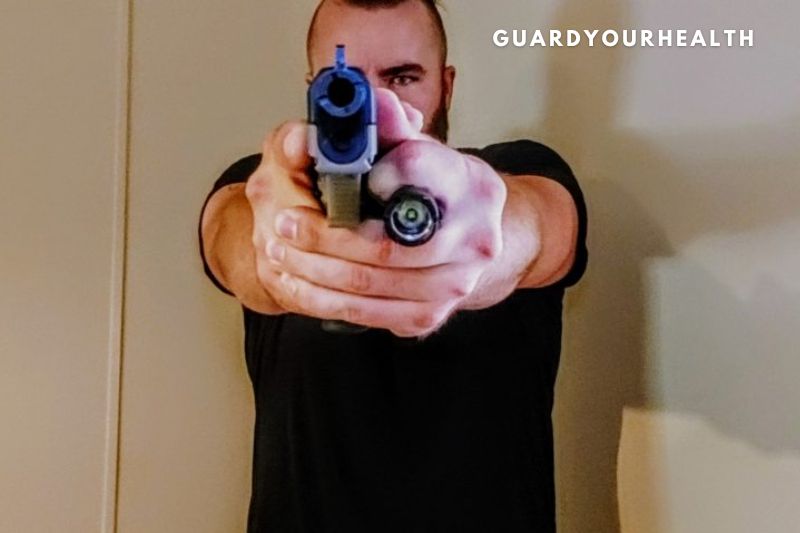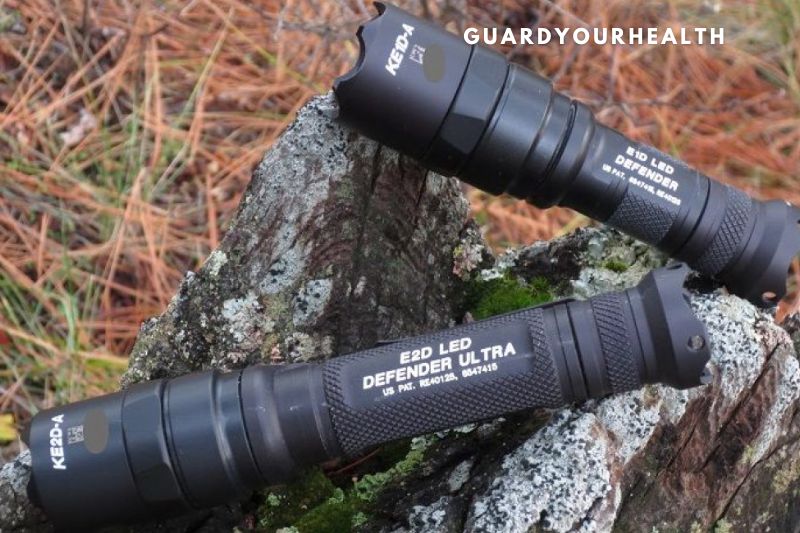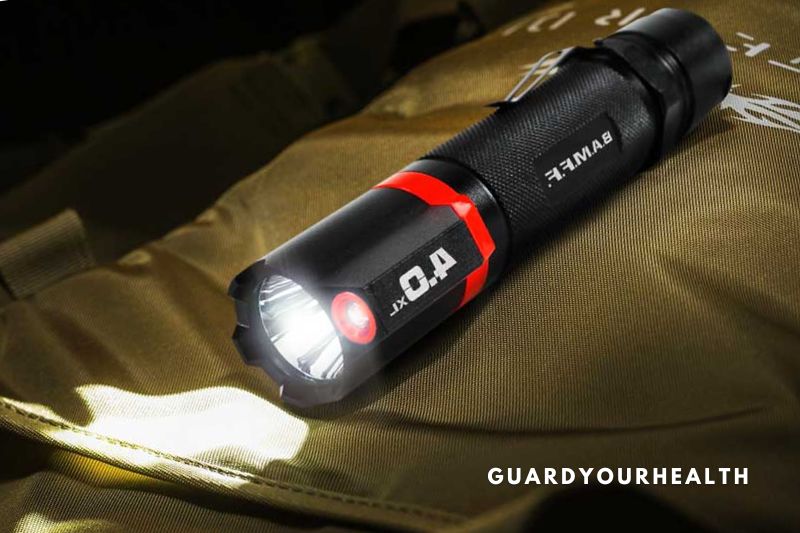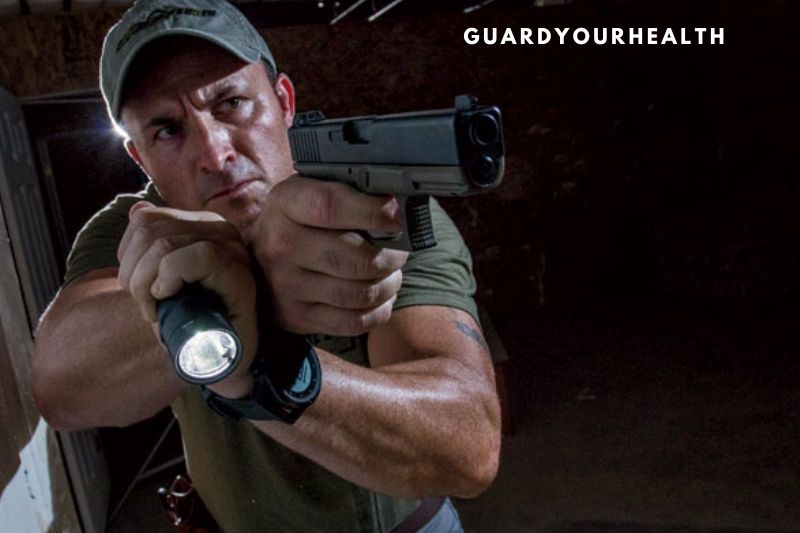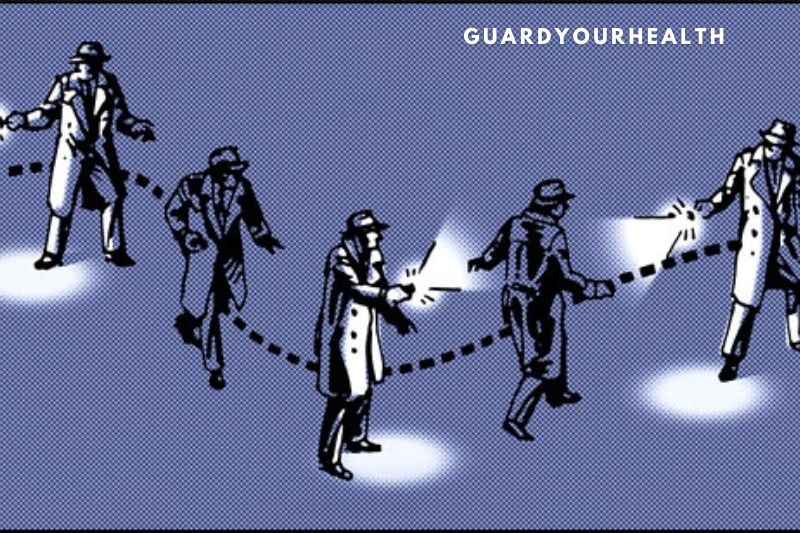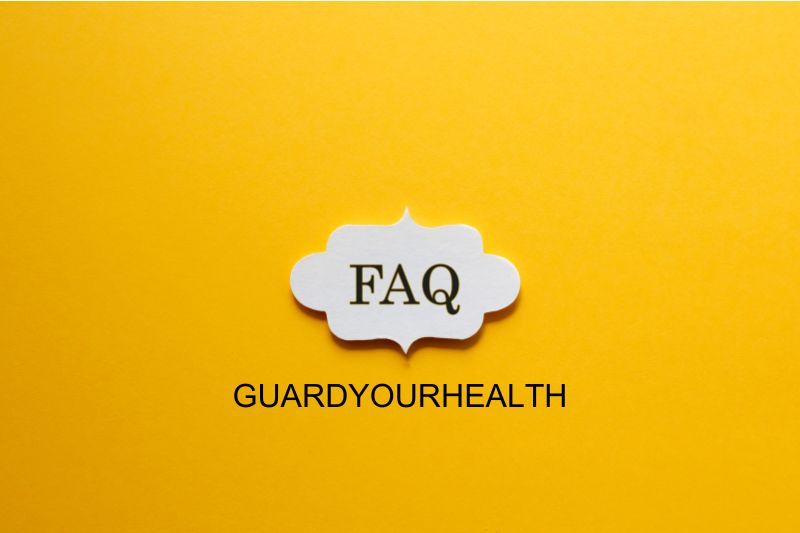Many people ask how many lumens are for self-defense flashlights? The answer to this question is not as simple as it might seem. The number of lumens you need will vary depending on your purpose for using the flashlight.
There are a few reasons why you would want a flashlight with more lumens for self-defense. The first is how dark it is where you live.
Candela vs. Lumens vs. Lux – Lighting Measurements Explained
The primary purpose of this post is to help you figure out how many lumens you need for your tactical flashlight.
However, if you’ve lately looked for a tactical flashlight, you’ve certainly seen that manufacturers use terms like “Candela” and “lux” to describe the effectiveness of their flashlights. As it turns out, all of these words apply to light output measure. Thus, what is the best self-defense flashlight?
To respond, we must first understand how a flashlight emits light. In a typical lamp, the bulb (the portion that lights when electricity is passed through it) emits light in all directions. On the other hand, a flashlight has a reflector that cups around the bulb, focussing the light it generates into the iconic cone-shaped beam.
The bulb’s design and reflector assembly influence how the light reaches a certain target; we may get a better knowledge of the many types of light measurements.
The candela is a unit of measurement used to represent the intensity of a light source—or, to put it another way, its brightness.
Meanwhile, the lumen describes the luminous flux of a light source or how much light is generated.
Finally, lux is a unit of measurement for illuminance, or how much light falls on a certain area—it is defined as 1 lumen per 1 square meter.
Reading these explanations in this format might be rather difficult, particularly if you are unfamiliar with the words.
Imagine a flashlight as a water hose to grasp this concept more easily. In this comparison, candela corresponds to water pressure, lumens corresponds to flow rate, and lux corresponds to the quantity of water that strikes a certain area at a given distance.
Light Measurements and the ANSI FL1 Standard
So, why did I give you a crash course in the science of light? This is because these light metrics are all crucial considerations while searching for the finest tactical flashlight for self-defense.
We can see this in action using the ANSI FL1 standard. ANSI FL1 is a flashlight testing standard that enables customers to evaluate flashlights’ performance from various manufacturers readily. The standard evaluates numerous aspects of the flashlight, such as light output and water resistance; nevertheless, for the sake of this study, we will concentrate mostly on the illumination element.
The FL1 standard evaluates a tactical flashlight’s illuminating performance in three ways. They are as follows:
- Light Output: This relates to the tactical flashlight’s overall light output, measured in lumens. As I indicated at the outset of this post, the normal portable tactical flashlight’s light output ranges from 300 to 1000 lumens. Torch-style tactical flashlights may produce significantly more light, with some versions producing up to 9000 lumens.
- Peak Beam Intensity: The highest brightness of the tactical flashlight’s beam in its center, measured in candelas. The quantity of candela emitted by a tactical flashlight is determined by its power output and how light is distributed by its reflector and lens assembly.
- Beam Distance: This is the greatest distance that the beam of a tactical flashlight can travel while still producing at least 0.25 lux of illumination. For comparison, 0.25 lux is about the degree of illuminance provided by the moon at ground level in a clear sky. A tactical flashlight’s beam distance, like its peak beam intensity, is determined by how the beam is produced from the flashlight.
What is the significance of all of this? This is because lumens aren’t everything with a tactical flashlight. Without the proper information, getting engrossed with the figures on the box is quite simple. And before you know it, you’ve purchased a flashlight that can be used as a weapon that isn’t suitable for the task.
It all boils down to the kind of beam that the flashlight creates. In general, tactical flashlights will be designed to emit two types of light beams (or, in some circumstances, both): spot and flood.
When we compare two flashlights with the same lumen output, the spot beam has a greater candela value and a longer beam distance. This is due to its narrower and more concentrated cone of light.
Meanwhile, the flood beam will have a lower candela rating and a shorter beam distance. However, since the flood beam’s cone is bigger, it can light a considerably larger area.
What Is a Tactical Flashlight?
We’re not talking about any old flashlight in today’s article. We’re discussing tactical flashlights. What distinguishes a flashlight as tactical?
A flashlight is built for tactical (military or law enforcement) usage. Many tactical flashlights are meant to be attached to a weapon for low-light conditions. They are generally smaller than regular flashlights, produce far more light, and are constructed of weapon-grade aluminum for optimal durability.
While tactical flashlights are generally intended for military and law enforcement use, as we’ll see below, they’re also an excellent daily and personal defense tool for the common citizen.
How Many Lumens for Tactical Flashlight
So, with this in mind, how many lumens do you truly need from your tactical flashlight? The quick answer is the range I mentioned at the start of this article—a tactical flashlight with an output of 300 to 1000 lumens should be enough illumination for most scenarios.
The lengthy answer, however, is a little more subtle. As I said in the last section, a tactical flashlight’s brightness output isn’t everything. It is also crucial to evaluate the kind of beam that the tactical flashlight emits and adapt it to the activities you want to do with it.
For example, a flood beam will give more lighting if you plan to use your tactical flashlight for camping, mechanical labor, or as an emergency light. On the other hand, spot beam tactical flashlights are ideal for search and rescue applications because of their expanded beam range, and the higher intensity makes spot beam lights more useful for self-defense.
If you want to own a self-defense flashlight, don’t hesitate to click Top 10 Best Self Defense Flashlight for Budet to buy one
Why Every Man Should Carry a Flashlight
Before we get into a flashlight’s tactical and self-defense applications, consider why you should start carrying one even if you don’t intend to use it to deter would-be assailants. A tiny, tactical flashlight, along with a pocket knife, is one of the handiest and most adaptable items a guy may have in his everyday Carry kit.
I can’t tell you how many times I’ve been in a scenario when a flashlight would have come in useful, but instead, I was left stumbling in the dark. Consider what happened the other day. I attempted to connect our TV’s audio output but couldn’t see anything behind the stand.
So I went rummaging around my home for a flashlight. I could have saved myself approximately 15 minutes if I had only a little flashlight with my knife in my pocket.
And, as folks on the East Coast discovered this week, power outages may occur at any moment and for extended periods. A flashlight may save you time and toe stubs as you explore your darker flat.
A flashlight may also be useful for self-defense, assisting you in repairing electrical connections or navigating your house during a power loss.
Flashlights: The Most Underestimated Tool for Personal Defense
A flashlight is essential for low-light shooting if you employ a pistol as a personal defense weapon. It not only aids in target identification, but it also helps you to see your rifle sights in the dark.
Even if you don’t carry a pistol for self-defense, a flashlight, when utilized appropriately, may come in helpful in a need. (We’ll go over how to use a flashlight, whether you’re armed or unarmed further down.)
They may be brought into locations where firearms are prohibited, such as movie theaters or airlines, and are ideal for men who reside in nations with tight weapon regulations but still wish to carry something for personal protection.
A tactical flashlight fulfills two critical self-defense tasks and one additional utility.
Aids in identifying hazards. Attackers often take advantage of the cover of darkness. A strong spotlight may aid in identifying dangers in low-light situations and reduce the advantage of an assailant creeping in the shadows. Simply putting a light on a nasty individual may be enough to make him flee.
Attackers are temporarily disoriented. Have you ever had a brilliant light beam in your eyes in the middle of the night? You were undoubtedly bewildered and possibly blinded for a while. You may use that natural response to bright light to protect yourself from potential assailants.
When you encounter a potential danger, beam your spotlight squarely into their eyes or, as Mike puts it, “dominate their face.” Your attacker would most likely put his hands up to his face, causing dizziness and semi-blindness for three to four seconds. That provides you plenty of time to leave or fight.
Bonus application: improvised weapon. A serrated or toothed bezel is seen on several tactical flashlights. Manufacturers promote these customized bezels as a tool for breaking automobile windows in an emergency.
However, Mike claims that shattering glass with a tiny, tactical light is easier said than done. “For hours, a group of Military Special Operations troops and I attempted to smash a vehicle glass with the toothed bezel of a tiny tactical flashlight.” We never damaged it.”
While a tactical flashlight’s bezel will not shatter windows, it may be utilized as an improvised hitting weapon during an assault. After you’ve confused your adversary by shining the light in his eyes, hit his face as hard as possible with the toothed bezel. The action should be similar to stamping him with a massive rubber stamp.
Mike advises caution while flying with toothed bezelled spotlights. A TSA official took one away from him because it was considered a “striking implement.” When in doubt, store your flashlight in your checked luggage.
The Disadvantages of Two-Handed Flashlight-Gun Techniques
The first two-handed approach for carrying a pistol and a flashlight includes holding the flashlight in front of you with your non-dominant hand while resting your gun-bearing hand on top, as seen in the picture on the left. You’ll commonly see this method is done in police programs.
The Rogers method is the name given to the second two-handed approach. The Rogers approach is a variation on the standard shooting grip that involves trapping the flashlight between the first and second or second and third fingers of your non-dominant hand, as seen in the right-side picture above.
While Mike feels both grips have appeal, he also believes they have drawbacks that jeopardize your safety and the safety of others while shooting a weapon in low-light conditions.
The main disadvantage of both two-handed tactics is that if you wish to shine a light on anything, you must also aim your rifle at it. While taking your finger off the trigger is a smart safety precaution, you must accept the danger of aiming your muzzle towards a possible non-threat, such as your child or your strange neighbor.
Furthermore, two-handed tactics may expose you to a head blow. You have no means of shielding your head from a strike from a concealed assailant while carrying the rifle and flashlight in both hands.
Another difficulty Mike has with two-handed approaches is that, except for the Rogers technique, none provide enough recoil control compared to one-handed shooting.
Finally, if you’re not cautious, adopting a two-handed approach might make it simple to trigger your gun’s magazine release.
How to Safely Maneuver in a Dark Space With a Flashlight
When you hear anything go bump in the night and suspect it is armed and dangerous, there is a certain manner you should operate in a dark environment with your flashlight to optimize your protection. Here’s how to go about it.
First, try the light switch. If you’re in a low-light situation, the first thing you should do is switch on the primary light source if it’s practical and safe to do so. Don’t be like the CSI forensics squad. The more light there is, the better.
Of course, there will be times when turning on the primary light source is impossible e – you’re not close to the switch, the power is out, you’re outdoors, and so on. In such a situation, you’ll have to rely on your flashlight. However, if you fear an assailant with a weapon is close, you must utilize your flashlight in a certain manner to keep yourself safe.
Light on, scan, off, and move. When you’re moving in low-light conditions and suspect an armed assailant is approaching, you don’t want to keep your flashlight on all the time. That makes you a target. Instead, go through the following steps:
- Light on
- Examine the surroundings. Look for potential risks.
- Turn off the light
- Move
- Repeat
Your danger will certainly fire at or assault the location where they last saw the light from your flashlight. By shutting off your light and moving, you improve the likelihood that you will not be standing where your danger may shoot or attack.
How to Use a Tactical Flashlight When You’re Unarmed
Even if you don’t have a pistol with you, you can protect yourself with a little flashlight. When you encounter danger, shine your light on his face and command his gaze.
How many lumens do you need to blind an attacker? The strong light will force you to become temporarily blind and disoriented, allowing you ample time to leave or fight your assailant. If you lack fighting skills or are unsure whether or not your danger is armed, your best flashlight for protection is to leave. There’s no need for machism; living is more manly than getting your belly pierced with a knife.
If you must combat your assailant, a fast, hard punch to the face with the toothed bezel of your tactical flashlight should be enough to knock him out and allow you to go. In this case, low, forceful kicks to the crotch or knees are equally effective since he won’t be able to see them coming with the light shining in his eyes.
How to Hold a Flashlight When Using a Gun
If you use a gun for self-defense, you should learn how to control and shoot the weapon with a flashlight. According to FBI data, the chance of needing to use your handgun in low-light conditions is substantially higher than in broad daylight.
While weapon-mounted lights and night sights serve a function while shooting a pistol in a dark area, they also have drawbacks. The main disadvantage of weapon-mounted lights is that you must direct your gun towards the item you wish to illuminate since the flashlight is mounted on your pistol.
Not very secure. The issue with night sights is that, although you can see your sights and align them if it’s too dark (and you don’t have a flashlight), you can’t see the target or if he/she/it is a danger. Furthermore, nighttime attractions might be rather pricey and may not be within your budget.
When used correctly, a compact tactical flashlight may enable you to safely evaluate your position without pointing your pistol towards a non-threat (resolving the problem with weapon-mounted lights), and you’ll be able to see your sights and your target without spending a fortune (solving the issues with night sights).
We’ll look at the strategies Mike doesn’t advocate utilizing while carrying a flashlight and a pistol, followed by his preferred option.
Mike’s Recommendation: The Eye Index Technique
Mike proposes and teaches a one-handed shooting method he calls the “Eye Index Technique” instead of a two-handed approach. The Eye Index Technique is a variation on the “Neck Index” gun/flashlight technique taught to Federal Air Marshals.
To perform the Eye Index Technique, follow these steps:
1. Place your tactical flashlight in your non-dominant hand, near your eye. This fulfills two functions. Placing the spotlight here illuminates not just your target but also your gun sights. To strike your target, you must be able to see both. Second, keeping your hand up by your head in this position protects you from any potential head hits.
2. Hold out your gun hand. Because you’ll be shooting with just one hand, you’ll need to change how you grip the rifle to reduce recoil. Grip the rifle with your dominant hand tighter than you would if shooting with two hands, but keep your trigger finger as relaxed as possible. Your thumb should be slightly tilted to guarantee equal pressure on the gun’s rear back strap. Don’t stretch your arm completely out. Keep your elbow slightly bent. This will assist you in keeping your arm behind the rifle for recoil control.
3. Turn on your flashlight. If you hold the flashlight correctly, the light beam should highlight your gun sights and any target you engage in. Scan and evaluate. Turn off the light and go moving. When confronted with danger, dominate his face and utilize the time he’s bewildered to evaluate the threat level and decide how to act.
4. Bring the pistol to your chest in a one-handed, high-ready stance if you want to shine a light on someone who isn’t a danger. By keeping your pistol near to your body, you prevent an assailant from taking it away from you.
Consistent training is essential for all weapons disciplines. It’s particularly critical if you’ve never fired with one hand before. Take advantage of any outdoor shooting range that is open after dark. Even if you don’t have access to a low-light shooting range, you can and should practice firing your rifle while carrying a flashlight in your non-dominant hand.
FAQs
How many lumens do I need for a home defense light?
Self-defense flashlights should have at least 60 lumens, but twice that is a good starting point. This brightness level is sufficient to search a building or momentarily blind an attacker. If 120 lumens is nice, 240 should be much better, and 480 should be fantastic, and so on up the chain, correct?
How many lumens do you need to stop an attacker?
You may temporarily blind the assailant using a flashlight that emits more than 100 lumens. 150 to 299 lumens. It will be sufficient to illuminate a vast dark room. At 150 lumens, you may be able to blind the attacker at night, but close to 300 lumens will allow you to blind the attacker during the day.
How effective is a flashlight for self-defense?
A tactical flashlight is efficient self-defense equipment. It may emit light intense enough to discourage an assailant, disorient them visually, or be employed as a blunt force self-defense weapon. They are widely used as a daily carry item or fitted to a pistol to illuminate a target.
What are 1000 lumens?
Lumens are the unit of brightness measurement, with 1 lumen equaling the brightness of 1 candle. Hence 1000 lumens equals the brightness of 1000 candles. 1000 Lumens is an excellent amount of illumination for LED, CFL, or incandescent lighting.
Are 500 lumens very bright?
A 500-lumen flashlight is bright enough for great for close-up work either indoors or outdoors and suitable for outdoor walking, fishing, hunting and for keeping in your car ready for emergencies. As with all lighting, the wider the beam of a flashlight the less intense the light will be and therefore feel less bright
Conclusion
After reading this article, it is clear that lumens are an important factor to consider when choosing a self-defense flashlight. Thanks for reading and considering this factor!

